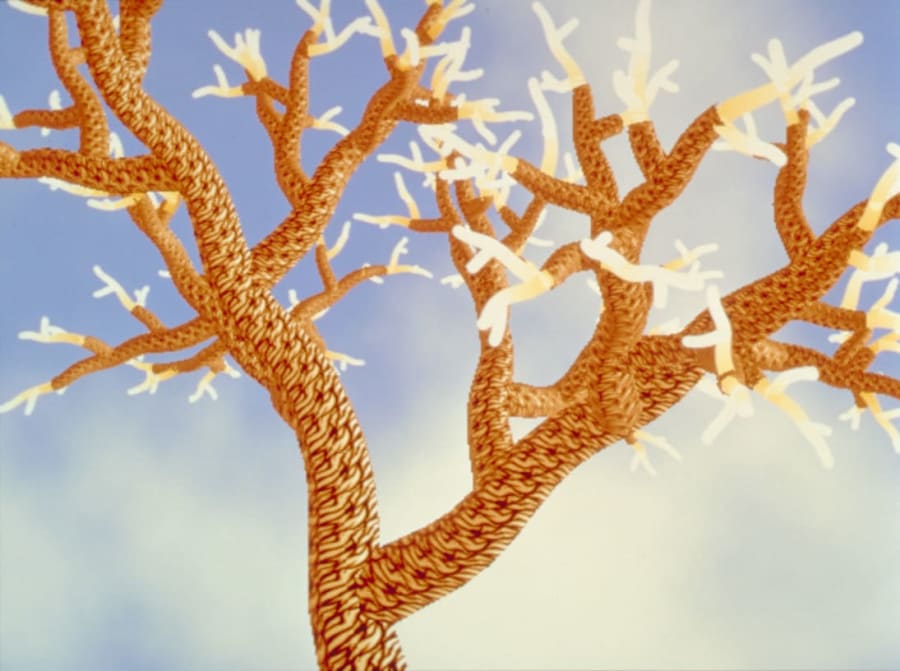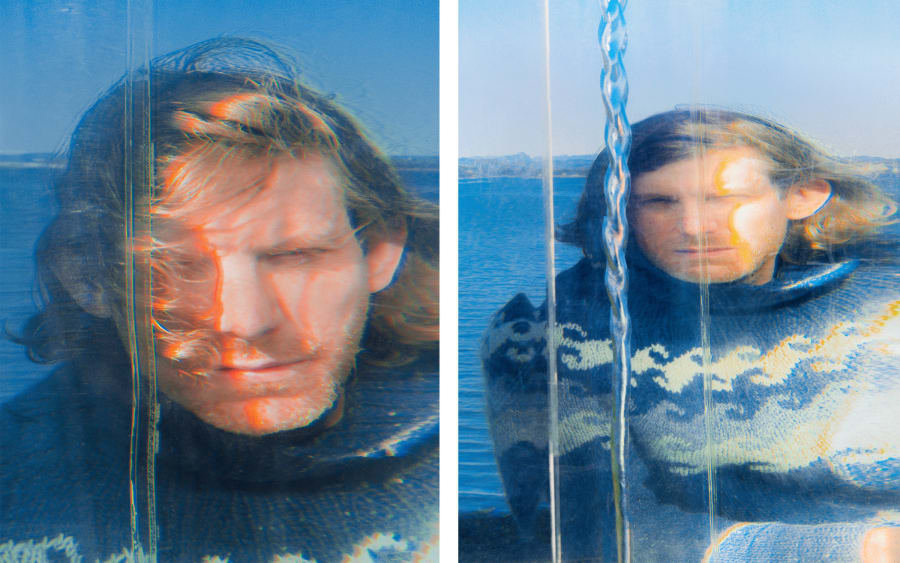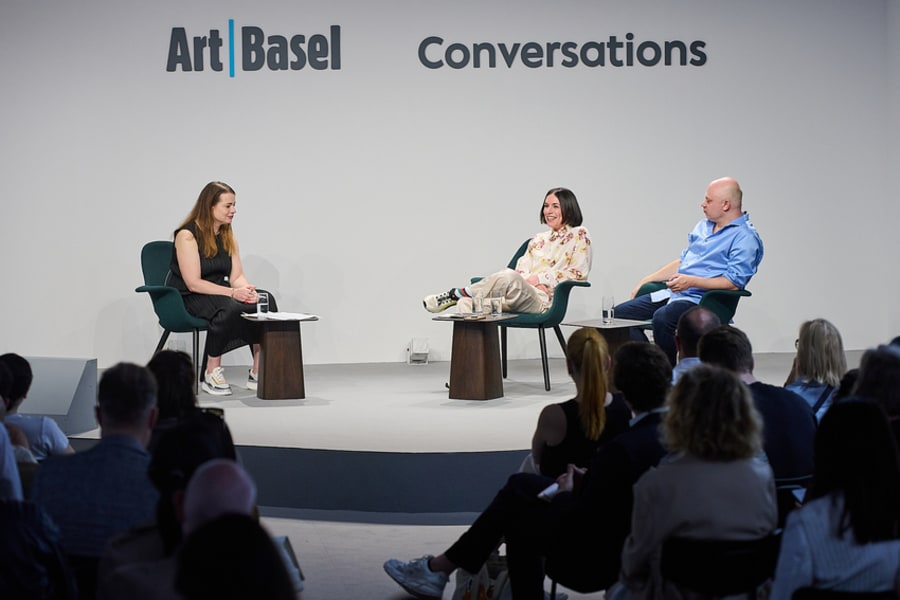Throughout his career, the artist Cory Arcangel has worked to redefine what an artwork is. He has consistently asked what really makes an artwork art, especially in relation to the rise of new media. Today, this question is more pertinent than ever, as NFTs and generative art jostle for places in the artistic canon and the definition of digital art is increasingly scrutinized, redefined, and widened. For his latest examination of this topic, Arcangel has joined forces with curator Giovanni Carmine to develop an exhibition exploring how the unstable boundary between what is considered art and non-art has played out over the last decade. The result is ‘ALL I EAT IN A DAY’ at Kunst Halle Sankt Gallen, which presents a selection of media and objects that are relatively new to the institutional landscape: a livestream; an immersive environment; a website; plush toys representing NFTs; and more. If the art world is an all-consuming beast, eating up everything, then this show asks: What happens when new media is digested?
Arcangel has navigated the rise of new media within the art world since the beginning of his career, when Net Art was still a niche. In the early 2000s, he became fascinated with modifying near-obsolescent video game cartridges; later, he trained an AI to play a discontinued smartphone game. In 2006, as new computer technologies were becoming widely accessible, resulting in ever-increasing digital image production and circulation, he voiced the anxiety that perhaps new media art created within the context of the art world might not be inherently more valuable than that produced outside it. ‘All this stuff out there made by all these people is probably better than the stuff I’m making,’ he said during a discussion as part of the ‘Net Aesthetics 2.0’ event organized by Rhizome in New York. Today, his anxiety has mellowed, and Arcangel brings that stuff into the museum.
‘ALL I EAT IN A DAY’ includes a basketball produced in a collaboration between the art and fashion collective Bernadette Corporation and the streetwear brand Supreme; the former is known for sophisticated play with identity and authorship, the latter for a trickster-like approach to fashion that often incorporates strategies recalling conceptual art. There is an HTML site by Laurel Schwulst called Flight Simulator Entertainment (2019), based on an app she created of the same name as an ‘ode to airplane mode.’ The site mimics the app, which prompts users to put their device into airplane mode for the duration of a real flight and virtually travel to the destination. Elsewhere, Jayson Musson, known by his alter ego Hennessy Youngman, presents His History of Art (2022), a sitcom about art history; Emily Sundblad livestreams a work of art in storage; and the Web3 organization Sanko GameCorp© presents plush toys representing characters from their game SankoPets, which are also sold as NFTs.
Objects like these, presented in the context of the Kunst Halle, confuse notions of what an artistic medium is or can be. Arcangel says that he believes the medium of an artwork encompasses everything from ‘what the information [gained] from a work does’ to ‘how a work is talked about, who is talking about it, where it is sold, and which communities are interested in it.’
Through a new installation in the show, Arcangel addresses the specific medium of immersive exhibitions. Femmes d'Alger dans leur appartement (Version A) (2024) offers his take on the worldwide trend for wildly commercially successful immersive lightshows, where paintings by historic masters such as Picasso, Van Gogh, and Monet are digitalized and projected in warehouse-like spaces at massive scales. When the works are animated, their inherent value as paintings disappears, and a new kind of spectacular value is added by the virality of photographs taken in and posted from these colorful, all-consuming rooms. To construct his environment, Arcangel uses inexpensive materials, mirrors, and digitally distorted images, calling it a ‘cheap, fly-by-night version’ of an immersive Picasso experience. But the piece is, like a hacked Nintendo cartridge, a reimagined, broken version of a medium that might soon be outmoded.
Watching over the show is the curators’ chosen ‘patron saint’, Blessed Carlo Acutis, who programmed websites about eucharistic miracles in the 2000s, passed away at age 15 in 2006, and was beatified by the Vatican in 2020 (colloquially, he is often referred to as the ‘patron saint of the Internet,’ a title that is likely to be officially proclaimed next year). For another new work, Carlo Acutis Sitting in a Room (DALL-E image) (2024), Arcangel used DALL-E to generate an image of the young saint-to-be, hunched over a laptop, because he represents a moment in which a venerable institution encounters and embraces a quickly changing cultural environment. With ‘ALL I EAT IN A DAY’, Carmine and Arcangel are attempting a kind of transubstantiation too – except it is not happening to a wafer during eucharist but to certain media in a kunsthalle. As throughout his artistic practice of nearly 25 years, here, as a curator, Arcangel prompts a reevaluation of how the consumption of the new triggers obsolescence.
Cory Arcangel is represented by Lisson Gallery (London, New York, Shanghai, Beijing, Los Angeles) and Thaddaeus Ropac (London, Paris, Salzburg, Seoul).
‘ALL I EAT IN A DAY’
From September 7 to December 1, 2024
Kunst Halle Sankt Gallen, St. Gallen
Philipp Hindahl writes about art, architecture, and literature for international magazines, newspapers, exhibition catalogues, and artist’s books. He is based in Berlin.
Caption for top image: Cory Arcangel, Femmes d’Alger dans leur appartement (Version A), production detail, 2024. Courtesy of the artist, Lisson Gallery and Thaddaeus Ropac Gallery.
Published on September 5, 2024.


